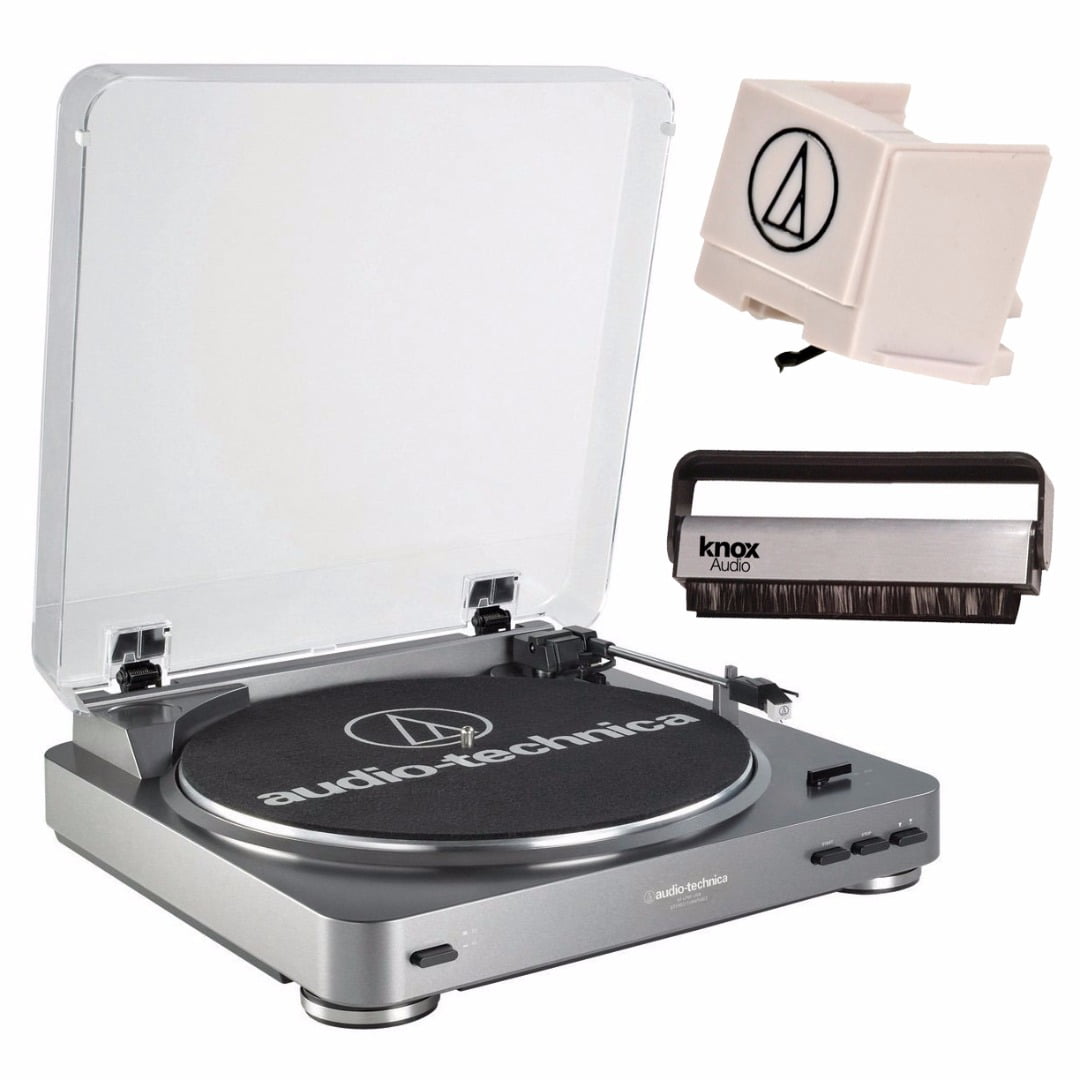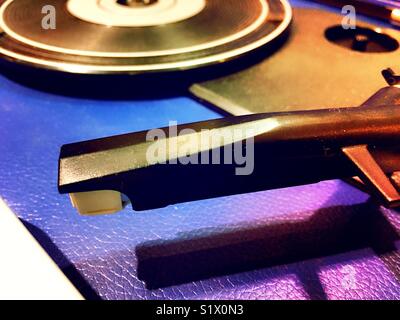

The figure can usually be found in the cartridge maker's instructions.
#Turntable stylus full#
The tracking weight is specified by the cartridge manufacturer as the optimum force to unlock the full range of audio information contained in the record's groove without miss-tracking or adding audio signal distortion. The tracking weight (sometimes called the vertical tracking force (VTF) is the force applied to achieve the correct weight balance for the stylus to sit in the groove of a record.
#Turntable stylus how to#
How to set up a turntable: Setting the tracking weight (VTF) of the tonearm for your cartridgeīalancing the arm (sometimes referred to as the tonearm) on a record player will ensure that the stylus and cartridge are tracking at the correct weight. Always check with the manufacturer for additional guidance. Note: The drive belt fitting process may differ between turntable designs. Tip: Make sure the belt isn't twisted to allow the platter to be driven smoothly. Pull the belt through the square opening in the platter and hook it over the pulley. Place the platter back onto the spindle.ĥ. Turn the platter upside down and slip the belt around the drive rim on its underside.Ĥ. Lift up the dust cover and take off the platter's protective mat.ģ.

Most turntable platters are driven by a motor pulley connected by something that looks a lot like a long rubber band - although some turntables use a different method such as the iconic Technics SL-1200 that uses a direct-drive motor and means the steps below can be bypassed.Īlthough many belt-driven turntables have differing arrangements, the basic steps for fitting the belt are detailed below. How to set up a turntable: Attaching the drive beltĪssuming you have the turntable connected to your speakers or amp via Bluetooth, or a set of RCA interconnect leads (usually supplied) connected to the phono input of an integrated amplifier or dedicated phone stage, one of the first things to do is to attach the drive belt. Adjust the turntable's feet accordingly (or use shims) until the adaptor remains stationary at the center of the platter. Try the adaptor placed on both X and Y axis.Ģ. If the adaptor rolls to the left or the right, then the turntable is not level. Remove the platter mat and place the adaptor on its side, close to the centre spindle. Tip: Another quick and easy method we discovered if you're record player has a 7-inch vinyl adaptor (opens in new tab), is to try the following:ġ. If the feet are fixed, you can use shims of card to level up the side of the turntable that's running out. Adjust the feet on the underside of turntable until the bubble is in the center of the level. Place the bubble level at the center of the turntable platter, or as close as you can to the record deck's center spindle (the bit that sticks through the hole in your vinyl).ģ. Place your turntable on the support, table or stand.Ģ. A bubble level (often called a 'spirt level' in the U.K.) which can be found from online retailers including Amazon (opens in new tab).ġ.A solid support, table or dedicated audio stand to place the turntable on.We've also seen images with record decks placed on a bed - these placements wont help it to perform its best or deliver the best sound.Ī level playing surface is crucial for smooth playback from any turntable - anything less than perfectly level will affect how evenly the platter spins and how well your record player works. A worn-out, damaged or defective stylus tip will degrade audio quality and injure the groove.Whatever turntable you have, it’s always important to make sure the record player is sitting on a level and no-resonant surface, unlike the image above where the record player is sitting on a floor. There are three desired qualities in a stylus: first, that it faithfully follows the contours of the recorded groove and transmits its vibrations to the next part in the chain second, that it does not damage the recorded disc and third, that it is resistant to wear.
/GettyImages-149603997-58f26d3c3df78cd3fcc1ac9e.jpg)
In terms of the pressure imposed on its minute areas of actual contact, the forces it must bear are enormous. The stylus is subject to hard wear as it is the only small part that comes into direct contact with the spinning record. A special chisel-like stylus is used to engrave the groove into the master record. If you would like us to assist in identifying your stylus or cartridge - you are welcome to email us a nice clear picture (1 or 2 different angles might help)Ī smooth-tipped stylus (in popular usage often called a needle due to the former use of steel needles for the purpose or plural "styli"), is used to play the recorded groove.


 0 kommentar(er)
0 kommentar(er)
